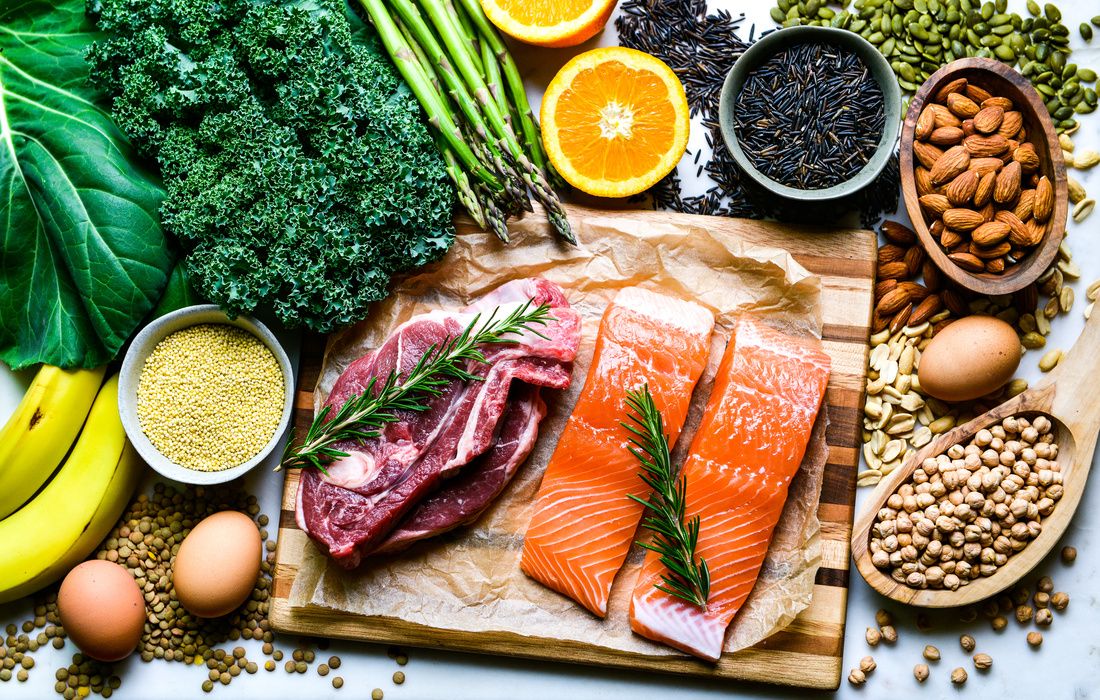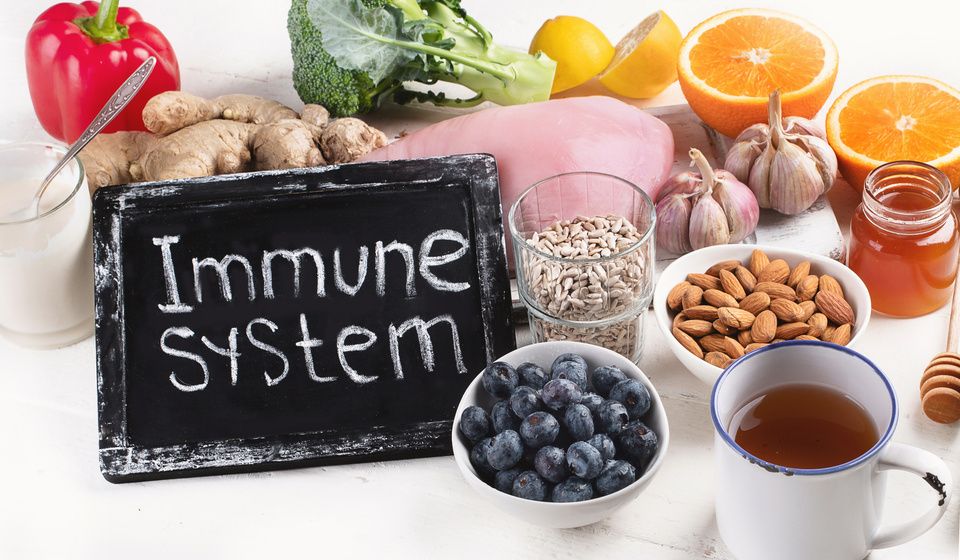How to Replenish Nutrient Deficiencies for Energy, Healing, and Longevity
Ali Segersten Aug 04, 2025
Feeling drained, struggling to heal, or sensing that your health isn’t where it could be? Your body is not a simple machine that runs on calories—it’s a living web of interdependent systems, running thousands of chemical reactions every second. Every muscle you move, every toxin you clear, every hormone you make, every enzyme that converts food to energy requires a steady supply of vitamins, minerals, amino acids, and healthy fats.
Nutrient insufficiencies can lead to low stomach acid and poorer absorption of nutrients from food, sluggish detoxification, disrupted immune balance, unstable blood sugar, and even increased risk for autoimmunity. Replenishing missing nutrients can begin to restore your energy, support healing, and promote long-term health and longevity.
Whether you’re working to balance hormones, healing an autoimmune condition, supporting detox pathways, restoring your gut, or simply wanting more daily energy—restorative nourishment through nutrient-dense foods and the right forms of supplements is foundational to bringing your body back into a state of balance.
What is a Nutrient Insufficiency?
When most people think about vitamin and mineral problems, they picture severe, textbook deficiencies—scurvy from lack of vitamin C or rickets from low vitamin D. But a nutrient insufficiency is different. It’s the stage that occurs long before a frank deficiency is diagnosed.
With an insufficiency, you may still have “enough” of a nutrient to prevent disease, but not enough to fuel optimal function. This is often when you start noticing fatigue, brain fog, hormone imbalances, mood changes, poor recovery from exercise, or stubborn digestive symptoms.
Since these changes happen gradually, they’re easy to dismiss or chalk up to aging or stress. However, when you begin to replenish the missing nutrients, you realize how much better your body feels and functions.
Biochemical Individuality: Why One Size Doesn’t Fit All
Nutrient needs aren’t universal, they’re as unique as your fingerprint. Your genetics, stage of life (pregnancy, childhood, aging), gut health, stress load, sleep quality, toxin exposure, life history, and current stage of healing all influence:
- How much of a nutrient you need
- How well you absorb it
- How quickly you use it
- How effectively you store it
Two people can eat the same foods, yet one thrives while the other develops signs of insufficiency. Periods of illness, chronic stress, intense exercise, or recovery from injury can dramatically increase nutrient requirements, sometimes far beyond standard daily recommendations.
This is why personalized nutrition—guided by symptoms, history, and when possible, targeted testing—is essential to truly meet your body’s needs.
The Web of Nutrient Interdependence
Nutrients don’t work in isolation. Every biochemical pathway in your body relies on multiple vitamins, minerals, and cofactors to keep running. When one nutrient is insufficient, it can create a bottleneck—slowing the entire process—and setting off ripple effects throughout your physiology.
They depend on one another in ways that are easy to overlook but vital for optimal function:
- Magnesium is needed to activate vitamin D.
- Zinc is required to transport vitamin A throughout the body via retinol-binding protein.
- Vitamin C regenerates vitamin E after it’s been used as an antioxidant.
- B6, B12, folate, magnesium, and zinc all support methylation—a vital biochemical process involved in detoxification, neurotransmitter production, and gene regulation.
- Low levels of B vitamins can impair cellular energy production, which may reduce stomach acid output, slow protein digestion, and limit the absorption of minerals like iron and calcium.
When one of these is missing, it’s not just a single pathway that suffers, it can start a cascade that impacts multiple systems at once. Over time, these small biochemical imbalances layer together, creating symptoms that may seem unrelated—fatigue, hormonal changes, digestive issues, mood fluctuations—but are often rooted in your body not getting the nutrients it needs.
Common Nutrient Insufficiencies and How to Replenish Them:
Here are some of the most common nutrients I see depleted in clients, along with the foods richest in those nutrients and the best supplement forms, to help slowly replenish what’s missing and deeply nourish the body. It’s truly amazing what can happen once you begin consistently shifting your dietary habits and focusing on nutrient-dense foods.
Magnesium
Why it matters: Works as a cofactor in over 300 enzymatic reactions, supporting muscle and nerve function, ATP (energy) production, DNA repair, blood sugar balance, metabolic regulation, and antioxidant defenses. It’s also essential for activating vitamin D and for regulating calcium and potassium inside cells. Magnesium plays a key role in the body’s stress response and is required for enzymes that convert B vitamins into their active forms, so your body can turn food into usable energy.
Why it’s often low: Soil depletion, low vegetable and nut intake, chronic stress, high sugar and caffeine consumption, excessive alcohol intake, certain medications (diuretics, PPIs), and heavy sweating can all drain magnesium stores.
Food sources: Pumpkin seeds, almonds, sunflower seeds, chia seeds, Swiss chard, black beans, cashews, avocados, and dark chocolate.
»Download the Magnesium Food & Supplement Guide
Best delivery method: Prioritize food first, and consider supplemental magnesium glycinate or malate for daily support; magnesium citrate may be helpful for occasional constipation and for certain health conditions. Magnesium is best absorbed in divided doses throughout the day.
Longevity connection: Supports mitochondrial function, cardiovascular health, and bone density. It calms the nervous system, aids in detoxification through enzyme support, and contributes to healthy aging by reducing oxidative stress and supporting cellular energy.
Vitamin D
Why it matters: Regulates over 1,000 genes, supports immune defense, bone health, muscle strength, blood sugar balance, and mood regulation. It also helps control inflammation by reducing pro-inflammatory cytokines, regulates immune activity in the gut, and maintains tight-junction proteins that keep the intestinal barrier strong. Low vitamin D is linked to osteoporosis, increased infections, autoimmune conditions, fatigue, and depression.
Why it’s often low: Limited sun exposure, darker skin pigmentation, sunscreen use, higher body fat, gut malabsorption, chronic illness, and celiac disease. Certain environmental toxins may also interfere with vitamin D metabolism and activation.
Magnesium connection: Your 25-hydroxyvitamin D test may not tell the whole story. Magnesium is crucial for activating vitamin D. If you're supplementing with vitamin D but not seeing benefits such as improved bone health, reduced inflammation, and better immune function, then magnesium status might be worth checking.
Food sources: Wild salmon, sardines, cod liver oil, pastured egg yolks, liver, and sun exposure on bare skin.
Best delivery method: Moderate sun exposure plus supplemental D3 during the winter months (best paired with K2).
Longevity connection: Supports skeletal strength, immune defense, and healthy gene expression—all critical for healthy aging.
Zinc
Why it matters: Supports immune cell development, wound healing, skin integrity, reproductive health, taste and smell, and over 300 enzymatic reactions. It’s also essential for protein synthesis, neurotransmitter function, and stable mood. Zinc is critical for gut epithelial repair and renewal; a deficiency slows healing of the intestinal wall and weakens the gut barrier. Low zinc can lead to frequent colds, poor wound healing, hair loss, brittle nails, reduced appetite, and skin rashes. It only takes a few weeks of eating a low-zinc diet to reduce immune function!
Why it’s often low: Poor soil quality, high intake of processed foods, low animal protein diets, malabsorption from gut inflammation or celiac disease, chronic stress, pregnancy, and aging can all deplete zinc. Excess copper or iron supplements can also interfere with absorption.
Food sources: Oysters, grass-fed beef, lamb, pumpkin seeds, turkey, chickpeas, and lentils.
Supplement forms:
- Zinc picolinate – Highly bioavailable and gentle on the stomach.
- Zinc citrate – Easily absorbed; good for general supplementation.
- Zinc carnosine – Especially helpful for gut healing and stomach lining support.
Best delivery method: Capsules or lozenges. Lozenges can also help soothe sore throats while delivering zinc directly to mucous membranes.
Longevity connection: Supports a resilient immune system, aids tissue repair, and helps maintain gut barrier integrity. Zinc is also needed for key detoxification enzymes, such as superoxide dismutase and alcohol dehydrogenase, that reduce oxidative stress and break down harmful compounds, protecting your body over the years.
Omega 3 Fatty Acids
Why they matter: Omega-3s are essential fats your body can’t make on its own. They support brain function, mood balance, heart health, hormone regulation, and the resolution of inflammation. EPA (eicosapentaenoic acid) and DHA (docosahexaenoic acid) are the most active forms, building flexible cell membranes, reducing inflammatory signals, and supporting healing after stress or injury. Insufficient omega-3 intake has been associated with depression, anxiety, memory decline, cardiovascular disease, and chronic inflammation, while clinical studies suggest that supplementation can reduce depressive symptoms in individuals with mood disorders.
Why they’re often low: Many people don’t eat enough cold-water fatty fish or algae—the richest sources of EPA and DHA. Modern diets are high in omega-6 fats (from vegetable oils), which compete with omega-3s for space in cell membranes. Vegetarian and vegan diets may rely solely on ALA (alpha-linolenic acid) from plants like flax, chia, hemp, and walnuts. The body converts ALA to EPA and DHA at very low rates, and this process requires zinc, magnesium, and vitamin B6. Chronic stress, inflammation, and nutrient deficiencies can further reduce conversion efficiency.
Forms and sources:
- EPA + DHA: Wild salmon, sardines, mackerel, herring, anchovies, pastured eggs, and marine algae.
- ALA: Flaxseeds, chia seeds, hemp seeds, and walnuts. ALA supports overall health but is only partially converted to EPA and DHA.
Best balance: For best results, combine ALA-rich plant foods with EPA/DHA-rich sources like cold-water wild fish.
Best delivery method: Eat omega-3-rich fish 2 to 3 times per week, or take a high-quality fish oil or algae-based supplement if you don’t consume seafood. Pair with antioxidant-rich vegetables and herbs to protect these delicate fats from oxidation.
Longevity connection: Supports cognitive sharpness, cardiovascular resilience, and a calm, balanced inflammatory response—all essential for healthy aging.
Vitamin B12 (Cobalamin)
Why it matters: Supports red blood cell formation, healthy nerve function, methylation, and mitochondrial energy production. Adequate B12 helps prevent fatigue, brain fog, tingling in the hands and feet, mood changes, and weakness. Vitamin B12 helps convert homocysteine into methionine, a reaction that’s essential for producing SAMe (S-adenosylmethionine)—your body’s primary methyl donor. SAMe supports mood balance, detoxification, neurotransmitter synthesis, and countless methylation-dependent cellular functions.
Why it’s often low: Absorption declines with age, low stomach acid, gut inflammation, certain medications (acid reducers, metformin), or a plant-based diet.
Food sources: Grass-fed beef, lamb, wild salmon, halibut, shrimp, poultry, sardines, clams, pasture-raised eggs, and grass-fed dairy (only animal foods contain B12).
Best delivery method: Sublingual lozenges or sprays allow absorption through the mucous membranes, bypassing common gut absorption issues.
Supplement forms:
- Methylcobalamin — Fast-acting methylated form, helpful for sluggish methylation or high homocysteine, but may overstimulate methyl-sensitive individuals.
- Adenosylcobalamin — Methyl-free mitochondrial form that supports ATP production and works gradually for steady energy.
- Hydroxocobalamin — Methyl-free, slow-releasing form that sustains blood levels and converts into active B12.
Longevity connection: Maintains brain volume, supports cognitive clarity, protects myelin sheaths, and enhances mitochondrial energy production for healthy aging.
Vitamin B6 (Pyridoxine)
Why it matters: Plays a central role in neurotransmitter synthesis (including serotonin, dopamine, and GABA), hormone metabolism, and methylation. Adequate levels support mood balance, restful sleep, protein metabolism, and resilience to stress.
Why it’s often low: Can be depleted by poor diet quality, chronic stress, alcohol use, and certain medications (such as oral contraceptives). Genetic variations may also reduce effectiveness.
Food sources: Wild salmon, chicken, turkey, bananas, pistachios, and chickpeas.
Best delivery method: Prioritize whole food sources first. For individuals with genetic variations or liver function challenges, consider supplementing with P5P (pyridoxal-5′-phosphate), the active coenzyme form that bypasses the liver’s conversion steps.
Longevity connection: Supports brain health, cardiovascular function, and detoxification. Helps regulate inflammation, maintain optimal methylation, and protect long-term cognitive and metabolic health.
Folate (Vitamin B9)
Why it matters: Folate is essential for DNA synthesis and repair, red blood cell formation, neurotransmitter production, and methylation—the process that supports detoxification, hormone balance, and gene regulation. Adequate folate is especially important during times of rapid cell division, such as pregnancy, but it’s also vital for brain health, cardiovascular function, and cancer prevention throughout life.
Why it’s often low: Poor diet quality, low vegetable intake, chronic alcohol use, certain medications (such as methotrexate, anticonvulsants, or oral contraceptives), and genetic variations like MTHFR can reduce folate availability or conversion efficiency. Folate is also a fragile nutrient, easily destroyed by cooking and food processing.
Food sources: Dark leafy greens (bok choy, arugula, collards, spinach, romaine, kale), asparagus, Brussels sprouts, avocado, lentils, black beans, chickpeas, citrus fruits, beets, and liver are excellent natural sources.
Forms in food: Folate in food naturally occurs in multiple different active forms such as tetrahydrofolate (THF), folinic acid, and 5-methyltetrahydrofolate (5-MTHF). After digestion, most dietary folates are converted by intestinal cells into 5-MTHF—the primary form that circulates in the blood. Many plant foods also contain some 5-MTHF directly.
Best delivery method: Prioritize folate-rich foods daily. If supplementation is needed (for pregnancy, low folate on labs, certain medications, or MTHFR variants), 5-MTHF or folinic acid are preferred over synthetic folic acid for better bioavailability and reduced risk of unmetabolized folic acid in the bloodstream.
Longevity connection: Supports genomic stability, healthy methylation patterns, cardiovascular resilience, and detoxification. Adequate folate intake has been linked to lower risk of cognitive decline, certain cancers, and birth defects, making it a cornerstone nutrient for healthy aging and long-term vitality.
Vitamin B1 (Thiamine)
Why it matters: Essential for converting carbohydrates into ATP (cellular energy), supporting nerve conduction, and brain function. Low B1 can lead to fatigue, poor stress tolerance, brain fog, irritability, digestive sluggishness, and, in severe cases, neuropathy or cardiovascular issues. Because ATP is required for energy-intensive processes like stomach acid secretion, low thiamine may contribute to hypochlorhydria. In turn, low stomach acid can impair protein digestion and reduce the absorption of key minerals like iron and calcium.
Why it’s often low: Chronic stress, high refined carbohydrate or sugar intake, alcohol consumption, certain medications (diuretics, metformin), prolonged low-calorie diets, bariatric surgery, and gut malabsorption. Older adults and those with digestive disorders are at higher risk.
Food sources: Brewer’s yeast, pork, wild salmon, trout, sunflower seeds, pine nuts, peanuts, Brazil nuts, wild rice, millet, and legumes.
Supplement forms: Thiamine HCl is a standard, well-absorbed form suitable for general use, while benfotiamine is a fat-soluble form that excels at supporting nerve health and glucose metabolism.
Best delivery method: Oral capsules or tablets work well; fat-soluble forms (like benfotiamine) may be better absorbed with meals containing healthy fats.
Longevity connection: Supports mitochondrial ATP production, cognitive clarity, cardiovascular resilience, and stress adaptability — key for maintaining energy and vitality with age.
Vitamin B2 (Riboflavin)
Why it matters: Plays a key role in mitochondrial energy production, antioxidant regeneration (glutathione), and healthy skin, eyes, and nerve function. It also supports the conversion of B6 and folate into active forms. Low B2 may cause fatigue, eye strain, cracked lips, mouth sores, and light sensitivity. Additionally, riboflavin supplementation has been shown in clinical trials to reduce the frequency, duration, and severity of migraine attacks, suggesting that suboptimal B2 status may play a role in migraine susceptibility.
Why it’s often low: Low intake of animal protein, alcohol use, poor gut absorption, hypothyroidism, and certain medications (oral contraceptives, tricyclic antidepressants).
Food sources: Brewer’s yeast, beef or lamb liver, pasture-raised eggs, almonds, wild rice, mackerel, mushrooms, hot peppers, millet, collard greens, and wild salmon.
Supplement form: Riboflavin-5’-phosphate, the active form, ideal for optimal absorption and utilization.
Best delivery method: Oral capsules.
Longevity connection: Protects mitochondria from oxidative stress, supports detoxification, and helps maintain healthy vision and skin as we age.
Vitamin B3 (Niacin/Niacinamide)
Why it matters: Central to hundreds of enzymatic reactions involving NAD/NADP—critical for mitochondrial ATP production, DNA repair, cellular resilience, and healthy weight regulation. B3 also supports healthy circulation, cholesterol metabolism, and brain function. Low B3 can cause fatigue, skin rashes, digestive issues, and in severe deficiency, pellagra (dermatitis, diarrhea, dementia).
Why it’s often low: Diets low in animal protein, chronic alcohol use, and poor tryptophan conversion due to inflammation or low B6.
Food sources: Liver, brewer's yeast, pasture-raised poultry, trout, wild salmon, mackerel, mushrooms, peanuts, wild rice, and lamb.
Supplement forms:
- Niacin (nicotinic acid) – Improves blood lipids and circulation; may cause flushing.
- Niacinamide (nicotinamide) – Non-flushing, supports brain and skin health.
- Nicotinamide riboside / NMN – Precursor forms that may boost NAD+ for cellular repair and longevity.
Best delivery method: Oral capsules or powder; take niacin with food to minimize flushing.
Longevity connection: NAD+ production declines with age, and vitamin B3 helps replenish it. By boosting NAD+ levels, it enhances mitochondrial repair, supports vascular health, and may improve healthy lifespan through better cellular resilience.
Vitamin C
Why it matters: A powerful water-soluble antioxidant required for collagen synthesis, wound healing, immune defense, neurotransmitter production, and regeneration of other antioxidants such as vitamin E. Supports adrenal function during stress, protects cells from oxidative damage, and enhances iron absorption. While scurvy is rare in developed countries, low-grade vitamin C insufficiency can impair tissue repair, immunity, and overall resilience.
Why it’s often low: Low intake of fresh fruits and vegetables, chronic stress (which increases utilization), smoking, environmental toxins, chronic inflammation, and certain medical conditions.
Food sources: Acerola cherries, camu camu, bell peppers, parsley, kiwi, strawberries, citrus fruits, broccoli, Brussels sprouts, and kale.
Supplement forms:
- Ascorbic acid – Highly bioavailable, widely used; may be buffered with minerals for reduced acidity.
- Liposomal vitamin C – Enhanced absorption and sustained blood levels.
- Vitamin C with bioflavonoids – May improve uptake and antioxidant synergy.
Best delivery method: Oral capsules, chewables, powder, or liposomal liquid; higher doses may be split throughout the day for better absorption.
Longevity connection: Protects DNA and mitochondria from oxidative stress, enhances antioxidant defenses (especially when combined with vitamin E), supports collagen maintenance, and promotes immune and vascular health—all key for healthy aging.

The Ongoing Practice of Deep Nourishment
Nourishing ourselves is a continual process of choosing foods that truly support us. Over time, layering in nutrient-dense meals fills your body’s reserves—supporting digestion, gut health, immune strength, cellular repair, detoxification, energy production, and mood. You become more balanced, heal faster, sleep more deeply, and have more energy throughout the day. Read more about how to replenish missing nutrients in Gift #8 of our 12 Gifts of Health.
Curious to go deeper with your nourishment?
Nourishing Meals® is your hub for over 1,900 nutrient-dense recipes for every diet. Plug in any ingredient you want to focus on, and let our powerful search engine deliver all the recipes that include it. You can even combine multiple dietary needs to only see recipes that match your exact requirements.
Want to boost magnesium? Search for “pumpkin seeds” or “chia seeds” and start weaving magnesium-rich recipes into your meals today. Looking to increase folate, vitamin C, or iron? Simply type in the food you want to use and watch your nutrient intake expand—one delicious recipe at a time.
✨ Watch the video & explore the membership here » — and see how simple, nourishing meals can support your journey back to health.
References:
Ames, B. N. (2006). Low micronutrient intake may accelerate the degenerative diseases of aging through allocation of scarce micronutrients by triage. Proceedings of the National Academy of Sciences, 103(47), 17589–17594. https://doi.org/10.1073/pnas.0608757103
Appleton, K. M., Rogers, P. J., & Ness, A. R. (2010). Updated systematic review and meta-analysis of the effects of n−3 long-chain polyunsaturated fatty acids on depressed mood. American Journal of Clinical Nutrition, 91(3), 757–770. https://doi.org/10.3945/ajcn.2009.28313
Askari, M., Mozaffari, H., Jafari, A., Ghanbari, M., & Darooghegi Mofrad, M. (2021). The effects of magnesium supplementation on obesity measures in adults: A systematic review and dose-response meta-analysis of randomized controlled trials. Critical Reviews in Food Science and Nutrition, 61(17), 2921–2937. https://doi.org/10.1080/10408398.2020.1790498
Bahardoust, M., Eghbali, F., Shahmiri, S. S., Alijanpour, A., Yarigholi, F., Valizadeh, R., Madankan, A., Pouraskari, A. B., Ashtarinezhad, B., Farokhi, H., Sarafraz, H., & Khanafshar, E. (2022). B1 vitamin deficiency after bariatric surgery, prevalence, and symptoms: A systematic review and meta-analysis. Obesity Surgery, 32(9), 3104–3112. https://doi.org/10.1007/s11695-022-06178-7
Dai, Q., Zhu, X., Manson, J. E., Song, Y., Li, X., Franke, A. A., Costello, R. B., Rosanoff, A., Nian, H., Fan, L., Murff, H., Ness, R. M., Seidner, D. L., Yu, C., & Shrubsole, M. J. (2018). Magnesium status and supplementation influence vitamin D status and metabolism: Results from a randomized trial. The American Journal of Clinical Nutrition, 108(6), 1249–1258. https://doi.org/10.1093/ajcn/nqy274
DiNicolantonio, J. J., O’Keefe, J. H., & Wilson, W. (2018). Subclinical magnesium deficiency: A principal driver of cardiovascular disease? Open Heart, 5, e000668. https://doi.org/10.1136/openhrt-2017-000668
Effatpanah, M., Rezaei, M., Effatpanah, H., Effatpanah, Z., Varkaneh, H. K., Mousavi, S. M., Fatahi, S., Rinaldi, G., & Hashemi, R. (2019). Magnesium status and attention deficit hyperactivity disorder (ADHD): A meta-analysis. Psychiatry Research, 274, 228–234. https://doi.org/10.1016/j.psychres.2019.02.043
Gibson, R. S., & Heath, A.-L. (2011). Population groups at risk of zinc deficiency in Australia and New Zealand. Nutrition & Dietetics, 68(2), 97–108. https://doi.org/10.1111/j.1747-0080.2011.01516.x
Haghighat, N., Sohrabi, Z., Bagheri, R., Akbarzadeh, M., Esmaeilnezhad, Z., Ashtary-Larky, D., Barati-Boldaji, R., Zare, M., Amini, M., Hosseini, S. V., Wong, A., & Foroutan, H. (2023). A systematic review and meta-analysis of vitamin D status of patients with severe obesity in various regions worldwide. Obesity Facts, 16(6), 519–539. https://doi.org/10.1159/000533828
Hemilä, H., & Chalker, E. (2023). Vitamin C reduces the severity of common colds: A meta-analysis. BMC Public Health, 23(1), 2468. https://doi.org/10.1186/s12889-023-17229-8
Holick, M. F. (2007). Vitamin D deficiency. New England Journal of Medicine, 357(3), 266–281. https://doi.org/10.1056/NEJMra070553
Holt, R., Petersen, J. H., Dinsdale, E., Knop, F. K., Juul, A., Jørgensen, N., & Blomberg Jensen, M. (2021). Vitamin D supplementation improves fasting insulin levels and HDL cholesterol in infertile men. The Journal of Clinical Endocrinology & Metabolism, 106(12), e5150–e5160. https://doi.org/10.1210/clinem/dgab667
Kautz, A., Meng, Y., Yeh, K.-L., Peck, R., Brunner, J., Best, M., Fernandez, I. D., Miller, R. K., Barrett, E. S., Groth, S. W., & O’Connor, T. G. (2024). Dietary intake of nutrients involved in serotonin and melatonin synthesis and prenatal maternal sleep quality and affective symptoms. Journal of Nutrition and Metabolism, 2024, Article 6611169. https://doi.org/10.1155/2024/6611169
Kennedy, D. O. (2016). B vitamins and the brain: Mechanisms, dose and efficacy—A review. Nutrients, 8(2), 68. https://doi.org/10.3390/nu8020068
Lopresti, A. L. (2020). The effects of psychological and environmental stress on micronutrient concentrations in the body: A review of the evidence. Advances in Nutrition, 11(1), 103–112. https://doi.org/10.1093/advances/nmz082
Marrs, C., & Lonsdale, D. (2021). Hiding in plain sight: Modern thiamine deficiency. Cells, 10(10), 2595. https://doi.org/10.3390/cells10102595
Moabedi, M., & Milajerdi, A. (2025). The effect of co-administration of vitamin E and C supplements on plasma oxidative stress biomarkers and antioxidant capacity: A GRADE-assessed systematic review and meta-analysis of randomized controlled trials with meta-regression. Frontiers in Immunology, 16, 1547888. https://doi.org/10.3389/fimmu.2025.1547888
Mozaffarian, D., & Wu, J. H. (2011). Omega-3 fatty acids and cardiovascular disease: Effects on risk factors, molecular pathways, and clinical events. Journal of the American College of Cardiology, 58(20), 2047–2067. https://doi.org/10.1016/j.jacc.2011.06.063
Mrowicka, M., Mrowicki, J., Dragan, G., & Majsterek, I. (2023). The importance of thiamine (vitamin B1) in humans. Bioscience Reports, 43(10), BSR20230374. https://doi.org/10.1042/BSR20230374
So, J., Wu, D., Lichtenstein, A. H., Tai, A. K., Matthan, N. R., Maddipati, K. R., & Lamon-Fava, S. (2021). EPA and DHA differentially modulate monocyte inflammatory response in subjects with chronic inflammation in part via plasma specialized pro-resolving lipid mediators: A randomized, double-blind, crossover study. Atherosclerosis, 316, 90–98. https://doi.org/10.1016/j.atherosclerosis.2020.11.018
Yaku, K., Palikhe, S., Iqbal, T., Hayat, F., Watanabe, Y., Fujisaka, S., Izumi, H., Yoshida, T., Karim, M., Uchida, H., Nawaz, A., Tobe, K., Mori, H., Migaud, M. E., & Nakagawa, T. (2025). Nicotinamide riboside and nicotinamide mononucleotide facilitate NAD⁺ synthesis via enterohepatic circulation. Science Advances, 11(12), eadr1538. https://doi.org/10.1126/sciadv.adr1538
You, B., Gomes Reis, M., Tavakoli, S., Khodadadi, N., Sohouli, M. H., & Sernizon Guimarães, N. (2023). The effects of NAD⁺ precursor (nicotinic acid and nicotinamide) supplementation on weight loss and related hormones: A systematic review and meta-regression analysis of randomized controlled trials. Frontiers in Nutrition, 10, 1208734. https://doi.org/10.3389/fnut.2023.1208734
Zhang, X., Xu, X., Zhong, Y., Power, M. C., Taylor, B. D., & Carrillo, G. (2019). Serum folate levels and urinary arsenic methylation profiles in the US population: NHANES, 2003–2012. Journal of Exposure Science & Environmental Epidemiology, 29(3), 323–334. https://doi.org/10.1038/s41370-018-0021-5
Zhou, L., Xiong, J. Y., Chen, S., Xie, F., Shi, Y., Yang, Y., & Zhao, F. (2022). Possible antidepressant mechanisms of omega-3 polyunsaturated fatty acids acting on the central nervous system. Frontiers in Psychiatry, 13, 933704. https://doi.org/10.3389/fpsyt.2022.933704
Zhou, Q., Zhang, Z., Wang, P., Zhang, B., Chen, C., Zhang, C., & Su, Y. (2019). EPA + DHA, but not ALA, improved lipids and inflammation status in hypercholesterolemic adults: A randomized, double-blind, placebo-controlled trial. Molecular Nutrition & Food Research, 63(10), e1801157. https://doi.org/10.1002/mnfr.201801157

About the Author
Alissa Segersten, MS, CN
Alissa Segersten, MS, CN, is the founder of Nourishing Meals®, an online meal-planning membership with over 1,800 nourishing recipes and tools to support dietary change and better health. As a functional nutritionist, professional recipe developer, and author of The Whole Life Nutrition Cookbook, Nourishing Meals, and co-author of The Elimination Diet, she helps people overcome health challenges through food. A mother of five, Alissa understands the importance of creating nutrient-dense meals for the whole family. Rooted in science and deep nourishment, her work makes healthy eating accessible, empowering thousands to transform their well-being through food.Nourishing Meals Newsletter
Email updates.






Add Comment